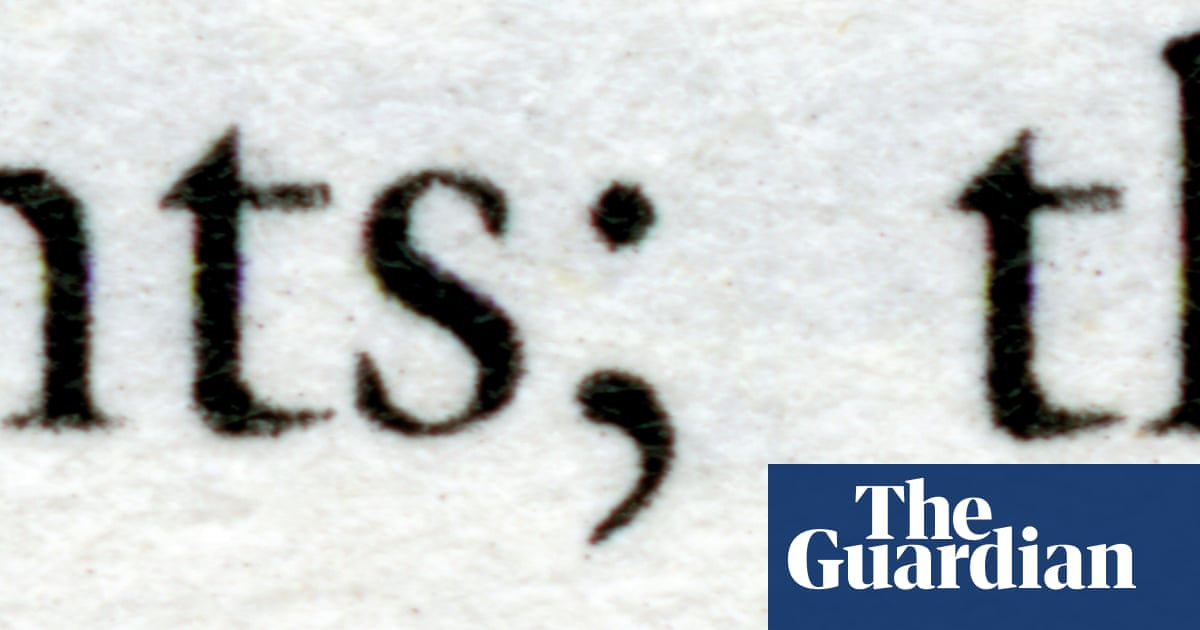“Do not use semicolons,” wrote Kurt Vonnegut, who averaged fewer than 30 a novel (about one every 10 pages). “All they do is show you’ve been to college.”
A study suggests UK authors are taking Vonnegut’s advice to heart; the semicolon seems to be in terminal decline, with its usage in English books plummeting by almost half in two decades – from one appearing in every 205 words in 2000 to one use in every 390 words today.
Further research by Lisa McLendon, author of The Perfect English Grammar Workbook, found 67% of British students never or rarely use the semicolon. Just 11% of respondents described themselves as frequent users.
Linguistic experts at the language learning software Babbel, which commissioned the original research, were so struck by their findings that they asked McLendon to give the 500,000-strong London Student Network a 10-question multiple-choice quiz on the semicolon. She found more than half of respondents did not know or understand how to use it.
As defined by the Oxford Dictionary of English, the semicolon is “a punctuation mark indicating a pause, typically between two main clauses, that is more pronounced than that indicated by a comma”.
It is commonly used to link together two independent but related clauses, and is particularly useful for juxtaposition or replacing confusing extra commas in lists where commas already exist – or where a comma would create a splice.
It first appeared in the work of Italian scholar and printer Aldus Pius Manutius the Elder in 1494 but, despite its longevity, has long been marmite grammar.
Lynne Truss, author of Eats, Shoots & Leaves, has castigated it as “dangerously habit-forming”. She added: “Many writers hooked on semicolons become an embarrassment to their families and friends.”
Truss is not alone in her antipathy: Goosebumps, RL Stine’s classic horror series for children, has one semicolon for every 200,000 words. Cormac McCarthy used 42 semicolons in his first book, The Orchard Keeper – but then just one across his next nine novels. EL James was criticised for repeatedly using commas inaccurately instead of semicolons in her Fifty Shades trilogy.
But the form of punctuation also has its staunch supporters: along with Charles Dickens, Mark Twain and Jane Austen, Abraham Lincoln stood strong on the issue. “I have a great respect for the semicolon; it’s a very useful little chap,” he said.
Virginia Woolf relied heavily on the semicolon in her novel-length meditation on time, Mrs Dalloway; the book includes more than 1,000 to echo its hero’s flow of conscious thought.
Nor could Salman Rushdie, John Updike and Donna Tartt have reached the literary heights that they have achieved without the help of an average of 300 semicolons for 100,000 words each.
But to paraphrase the semicolon-supporting Twain, reports of “useful little chap’s” death might have beengreatly exaggerated: Google Books Ngram Viewer, which includes novels, nonfiction, and even scientific literature,showsthat semicolon use in English rose by 388% between 1800 and 2006, before falling by 45% over the next 11 years. In 2017, however, it started a gradual recovery, with a 27% rise by 2022.
Perhaps, therefore, it will not be Vonnegart who wins out in the battle of the semicolon, but the rash, witty, louche Camille Desmoulins, as recreated by Hilary Mantel.
In her novel A Place Of Greater Safety, Mantel imagined the politician, writer and best-known journalist of the French revolution having no doubts about it at all: “I wonder why I ever bothered with sex,” she quotes him as saying. ‘There’s nothing in this breathing world so gratifying as an artfully placed semicolon.’”
